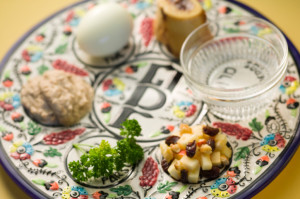
Passover is an eight day Jewish festival that occurs every spring. It occurs on a different date each year and always falls on the first full moon after the Vernal Equinox. This year Passover begins on April 3 and ends on April 11. The most important Jewish holiday of the year, Passover celebrates rebirth. It also commemorates the journey of Hebrews from slavery to freedom several thousand years ago.
History
For Jewish people, Passover is particularly noteworthy because it marks the end of years of slavery to the Egyptian pharaohs. While they were enslaved, the Jews were forced into backbreaking labor and subjected to many horrible things. According to the Old Testament of the Christian Bible (which is largely based on the Hebrew Bible), God was upset by the treatment of the Israelites. He sent Moses to deliver a message to Pharaoh, which was “Send forth My people to serve Me.” Pharaoh ignored God who then cursed the ancient Egyptians for the treatment of the Hebrews with ten plagues. They were:
- #1 – The water in the River Nile turned to blood
- #2 – Thousands of frogs invaded the homes of the Egyptians
- #3 – Dust turned into lice
- #4 – Swarms of flies descended on the land
- #5 – Livestock, including cattle, horses, donkeys, sheep and goats became sick and died. The Israelites’ livestock was spared.
- #6 – Boils appeared on the skin of the Egyptians
- #7 – A destructive thunderstorm of hail and lighting occurred that was the worst in Egyptian history
- #8 – Swarms of locust destroyed all remaining crops
- #9 – Darkness covered the land for three days except in the homes of the Israelites
- #10 – The death of Egyptian first born sons and daughters
The word “Passover” is derived from the first children of the Israelites being spared (or passed over) during the 10th plague, while the eldest Egyptian offspring were killed. In order to save their children, the Hebrews were told to mark their doorways with lambs’ blood. After the final plague, Pharaoh ordered the Israelites to leave immediately. They fled so quickly the bread dough they made didn’t have time to rise. Moses led the Israelites out of Egypt.
Seder
The Seder is the traditional meal served on the first night of Passover. The food consumed is meant to symbolize the hardships the Israelites suffered. It includes:
- Matzah
Considered by many to be the most important symbol of the Seder, it is unleavened bread similar to what the Israelites took with them when they left Egypt.
- Roasted lamb shankbone
Memorializes the lamb that was sacrificed the night the Israelites left Egypt.
- Bitter herbs: Horseradish is often served, but any kind will suffice. It is meant to represent the bitterness of slavery.
- Roasted egg
It can have a variety of meanings depending on your culture. The roasted egg often stands for spring and renewal and is not consumed during the meal.
- Charoset
Salad of apples, cinnamon, nuts and wine intended to symbolize the mortar the Israelite slaves used to make bricks.
- Karpas
Karpas is a green vegetable honoring spring. Parsley is typically used, but any kind can be served.
- Chazeret
Another bitter herb also intended to symbolize the hardships the Hebrews endured while they were enslaved. Leafy greens including romaine lettuce and carrot greens are usually served.
- Salt Water
A bowl of salt water is placed on the table as a reminder of the sweat and tears of slavery. It is customary to start the Seder with everyone dipping a hardboiled egg (but not the roasted egg) in the salt water and eating it.
Passover is a highly significant holiday to Jews. It commemorated through old traditions, practices and the Seder.

